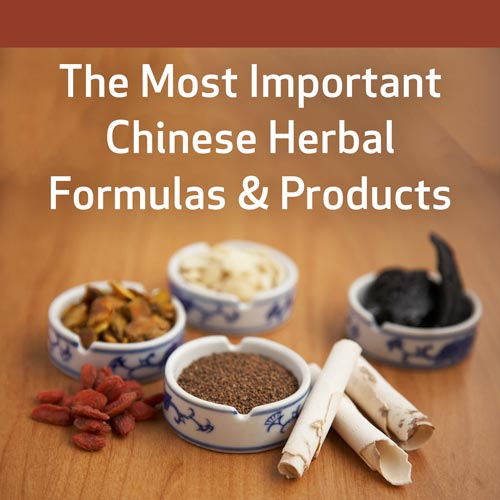Chinese Medicine in the Treatment and Prevention of H1N1 Swine Flu
As the H1N1 Swine Flu sweeps across the world, it is important to keep the illness in perspective. First of all, while all flu is deadly[1], this flu appears to be milder in symptoms and duration than the common flu. What distinguishes H1N1 is that it is highly contagious, and those who are getting sick are children and young adults. It seems epidemic in the middle and high school age range. Despite its relative mildness, H1N1 is causing death and hospitalizations, and health authorities throughout the world are making effort to address the pandemic.
Traditional Chinese herbal doctors in China are familiar with both treatment and prevention of avian-swine flu, and the China Academy of Sciences has advised the general public to seek out Chinese herbal doctors, or to self-medicate with recommended Chinese herbal products. As H1N1 spreads widely throughout China, millions of people are taking advantage of these government sponsored recommendations.
China had a successful experience with the use of Chinese herbs during the 2003 SARS epidemic (“Sudden Acute Respiratory Syndrome”), a flu with many similar clinical features to H1N1. At that time, a massive public health campaign educated people what herbal medications to use, and provided more sophisticated guidelines for doctors of Traditional Chinese Medicine (TCM). For several years, I presented material on Chinese herbs in the treatment of SARS in a lecture to acupuncturist-herbalists, and the lecture notes are available on my website.[2]
In one study done in Hong Kong, Chinese herbs proved more efficacious than any of the Western approaches for the treatment of SARS. At the time, 20% of those coming down with SARS in Hong Kong were health care workers in the Western hospitals, all of whom needed to be hospitalized. The Hong Kong health authorities created an herbal supplement that was given to volunteer hospital healthcare workers, who were then monitored for sickness. All of the healthcare workers avoided hospitalization, and those that got sick had markedly reduced signs and symptoms. The Hong Kong health ministry then mass produced the formula and gave them first to all healthcare workers requesting it, and afterwards made it available to the general population.[3]
Understanding Avian-Swine Flu.
When a flu virus cross mutates between birds and mammals (such as pig), and then further cross-mutates within a human host, the result can be the creation of a virulent strain of flu.
Research epidemiologists and demographers are most concerned about the emergence of flu like the 1918 Spanish Grippe pandemic. That tragic event killed at least 50 million people worldwide within 5 months. Many people who died did so within 48 hours of their first symptoms. It attacked the young and strong, leading scientists to wonder if the virus was made more virulent by strong immune systems. The notoriety of the 1918 Flu is based on its extreme contagion and the severity of the symptoms. That flu was also a strain of the H1N1 virus, which is why modern demographers and epidemiologists have been so concerned.[4]
Avian-swine flu is the result of mutations between several different kinds of animal species. All influenza is transmitted around the world by birds that carry the virus in their intestines. Rarely do the birds themselves get sick.[5] If the virus mutates in a certain way that sickens the bird, the virus is then called Avian Flu. (Often, it is only domestic chickens, turkey and ducks that get sick.) There have been several times in the last 100 years when an avian strain has further mutated when exposed to a flu virus of another species, and then goes on to affect humans. This type of flu tends to be more contagious with more severe symptoms.
In the 1918 Spanish Grippe, multiple species transmutations occurred. It is thought that the first mutation happened in south China ponds used for raising carp fish. Here, pig feces were spread into the ponds to facilitate algae growth, which fed the carp. Migrating ducks and geese fed on the pond surface, ingesting contaminated pig feces, and allowed a mutation that created avian-swine flu. The next mutation occurred when it settled into wounded soldiers who were closely packed in trains and hospitals in Europe.[6] This final swine-avian-human mutation was unprecedented in its virulence and contagion.[7]
Some scientists think that it is unlikely that a third human mutation based on similar circumstances would happen again. They argue that we have seen pandemic H1N1 flu in 1957, 1968, 2003, and 2009, and all have been less virulent then the 1918 Spanish Grippe.[8]
Nevertheless, other epidemiologists and demographers are concerned about a possible reoccurrence of the 1918 pandemic, also caused by the H1N1 virus, explaining the attention shown by public health officials around the world.
Understanding the H1N1 Swine Flu.
“Influenza A (H1N1) virus is the most common cause of influenza in humans. H1N1 strains caused roughly half of all human flu infections in 2006. Other strains of H1N1 are endemic in pigs (swine influenza) and in birds (avian influenza).”[9]
“Swine Flu”, a strain of the H1N1, was first identified and labeled in April, 2009. The illness is relatively mild in most cases. People in higher risk groups include those with asthma, diabetes, obesity, heart disease, or who are pregnant or have a weakened immune system. People who were previously healthy, however, may develop secondary infections, such as bacterial pneumonia, which may become serious and require medical hospitalization.
Like other influenza viruses, this H1N1 strain is spread by coughing, sneezing, or touching contaminated surfaces and then touching the nose or mouth. Symptoms, which last up to a week, are similar to those of seasonal flu, and can include fever, sneezing, sore throat, headache, and muscle or joint pains. The main symptoms are fever (101-103°F) with chills or shivering, and headache. In my clinical practice, we have seen Swine Flu develop easily into a harsh cough (lung fire). [10]
China’s Recommendations for the Treatment for H1N1 Swine Flu.
During the SARS epidemic of 2003, the China Ministry of Health issued guidelines to TCM doctors for treatment. The approach was based on the classical Wen Bing (Warm Disease) organization from the late 17th century, and meant to address two of the most common presentations: lung wind-heat, and spleen-stomach damp-heat. The first presentation was marked by fever and cough, and the second by fever, nausea and diarrhea. The new Swine Flu does not seem to present as the damp-heat type, but the observations and recommendations made for the lung wind-heat type still apply.
In the classical Wen Bing approach, prescriptions were advised for various stages of an illness. In the late 18th century, we saw the addition of more robust heat-clearing herbs, such as Huang Qin (Radix Scutellariae) and zhi zi (Fructus Gardenia Jasminoides). In the modern approach, especially since the SARS epidemic of 2003, wen bing formulas are still recommended, but now with the addition of herbs showing strong antiviral effect.[11]
The herbs that proved themselves during the SARS epidemic include well known classical medicines such as lian qiao (Fructus Forsythia Suspensa), jin yin hua (Flos Lonicerae Japonicae), ban lan gen (Radix Isatidis seu Baphicacanthi) and da qing ye (Folium Isatidis seu Baphicacanthi), as well as recommendations for antiviral herbs that found their way into the mainstream after 1950: chuan xin lian (Herba Andrographis Paniculatae), guan zhong (Rhizoma Dryopteris crassirhizoma), mao dong qing (Radix Ilicis Pubescendis), zao xiu (Rhizoma Paridis Polyphyllae), bai jiang cao (Herba cum Radix Patriniae), hu zhang (Radix et Rhizoma Polygoni Cuspidati) and zi hua di ding (Herba cum Radice Violae Yedoensis).
As H1N1 has spread through China, various ministries of health and individual hospitals have issued guidelines for both treatment and prevention of flu.[12] I would like to show some of their herbal recommendations.
For acute presentation with fever, chills, headache and sore throat, many herbal formulas take yin qiao sanor sang ju yin and add herbs with antiviral properties[13] as well as additional qi tonics. Both yin qiao sanand sang ju yin were recorded by Wu Ju-Tong in 1798 as part of the wen bing (warm diseases) movement.
The following formula was generated during the SARS epidemic of 2003.[14] The original Sang Ju Yin formula uses Sang Ye (Folium Mori Albae), Ju Hua (Flos Chrysanthemi Morifolii), Lian Qiao (Fructus Forsythiae Suspensae), Bo He (Herba Menthae Haplocalycis), Jie Geng (Radix Platycodi Grandiflori), Xing Ren (Semen Pruni Armeniacae), Lu Gen (Rhizoma Phragmitis Communis) and Gan Cao (Radix Glycyrrhizae Uralensis). The adjusted formula added Da Qing Ye (Folium Isatidis seu Baphicacanthi), Huang Qin (Radix Scutellariae) and Huang Qi (Radix Astragali Membranaceus).
Other recommended prescriptions for acute presentation use simpler approaches, basically gathering together a few herbs with strong antiviral-type properties. The “Bird-Swine Formula” recommends four herbs: jin yin hua (Flos Lonicerae Japonicae), ban lan gen (Radix Isatidis seu Baphicacanthi), bo he (Herba Mentha Haplocalyces) and gan cao (Radix Glycyrrhizae Uralensis).
Another slightly larger formula recommends the following: chuan xin lian (Herba Andrographis Paniculatae), yi yi ren (Semen Coicis Lachryma-jobi), guan zhong (Rhizoma Dryopteris crassirhizoma), lian qiao (Fructus Forsythia Suspensa), jin yin hua (Flos Lonicerae Japonicae) and hu zhang (Radix et Rhizoma Polygoni Cuspidati). Other herbal prescriptions are also reported.[15]
Besides recommending herbal decoctions and powders, the Chinese authorities also recommend the use of various prepared products such as gan mao ling, zhong gan ling, ban lan gen chong ji for acute symptoms.[16]
For herbalists who customize prescriptions, the following herbs can be added for specific symptoms:
For fever, add shi gao (Gypsum) and dan zhu ye (Folium Lophatherum).
For sore throat, add lu gen (Rhizoma Phragmites) and niu bang zi (Fructus Arctii Lappae).
For chills and shivering, add ge gen (Radix Puerariae) and chai hu (Radix Bupleurum).
For lymph node enlargement, add chai hu (Radix Bupleurum), huang qin (Radix Scutellariae Baicalenses) and xuan shen (Radix Scrophularia Ningpoenses).
For harsh cough, add zhi zi (Fructus Gardenia Jasminoides) and she gan (Rhizoma Belamcandae.
Based on the Chinese recommendations, I created a formula called CLEAR TOXIN that I use with my patients during acute flu illness. It consists of ban lan gen (Radix Isatidis seu Baphicacanthi), lian qiao (Fructus Forsythiae), bai zhu (Rhizome Atractylodes Macrocephala), dan zhu ye (Folium Lophatheri), lu gen (Rhizoma Phragmitis), yu xing cao (Herba Houttuyniae), jin yin hua (Flos Lonicerae Japonicae), ge gen (Radix Puerariae), ju hua (Flos Chrysanthemum Morifoli), fang feng (Radix Ledebouriellae Divaricatae), bo he (Herba Menthae), gan cao (Radix Glycyrrhizae Uralensis).
This formula does not address the harsh cough stage.
Prevention.
For flu prevention, the recommended approach has been an adjusted yu ping feng, adding in antiviral herbs. The original yu ping feng formula, dating back to 1481[17] supports the immune system by boosting both ying and wei qi. Antiviral herbs are added in the expectation that in a pandemic one will inadvertently be exposed to the flu virus.[18] The prescription called “Flu Prevention Formula”, formulated and issued by the Committee of Experts for Flu Prevention and Control under Beijing Administration of Traditional Chinese Medicine, follows this approach.[19] The herbs used are huang qi (Radix Astragli), bai zhu (Rhizome Atractylodes Macrocephala), fang feng (Radix Ledebouriellae Divaricatae), guan zhong (Rhizoma Dryopteris crassirhizoma), jin yin hua (Flos Lonicerae Japonicae) and chen pi (Pericarpium Citrus Reticulata).
Based on Chinese recommendations, I have created a formula called IMMUNE PLUS. It is taken when someone in the house is sick, or by people put at risk in crowded situations: schools, airplanes, work, etc. It consists of huang qi (Radix Astragli), tai zi shen (Radix Pseudostellaria Heterophylla), fang feng (Radix Ledebouriellae Divaricatae), bai zhu (Rhizome Atractylodes Macrocephala), lian qiao (Fructus Forsythia Suspensa), ban lan gen (Radix Isatidis seu Baphicacanthi), huo xiang (Herba Agastaches seu Pogostemi), ju hua (Flos Chrysanthemum Morifoli), gan cao (Radix Glycyrrhizae Uralensis).
Herbal Product Recommendations for Clinicians.
Flu usually presents with rapid-onset fever with chills or shivering, headache or neck ache. If not using customized formulas referred to in this article, my recommendations are as follows:
1. Chinese Herbal Products.
For illness, alternate GAN MAO LING and ZHONG GAN LING, taking one of them every 3 hours.[20] Both are commonly available from various manufacturers.
If harsh cough develops, add formulas that clear lung fire.[21]
For prevention, use Yu Ping Feng San, also known as JADE SCREEN.
My formulas, CLEAR TOXIN and IMMUNE PLUS are also available to practitioners.[22]
2. Support:
a. Oscillococcinum (Boiron), a homeopathic medicine made from duck liver. Ducks are normally immune to flu virus, and the homeopathic sarcode offers specific protection for flu, both as a preventative and as a treatment. Take one capful of pellets from the small vial. (It is completely unnecessary to take the whole vial). In illness, take one capful every 1-2 hours. As a preventative, take once daily.
b. Vitamin D. This is D3, and it promotes natural killer cells that attack virus. Take 5000 units daily for prevention, and 10,000 units a day if sick. In my opinion, this is the single best prevention against flu.[23]
Other Courses By This Teacher

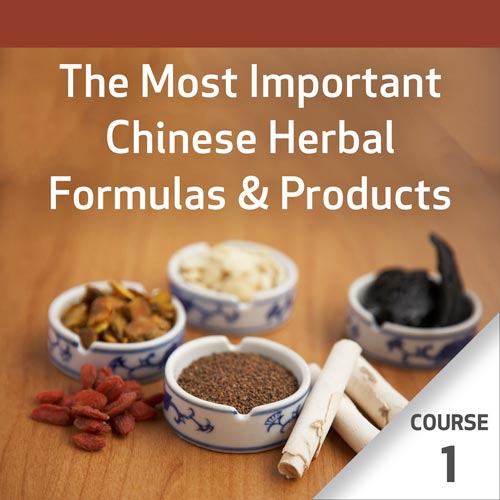

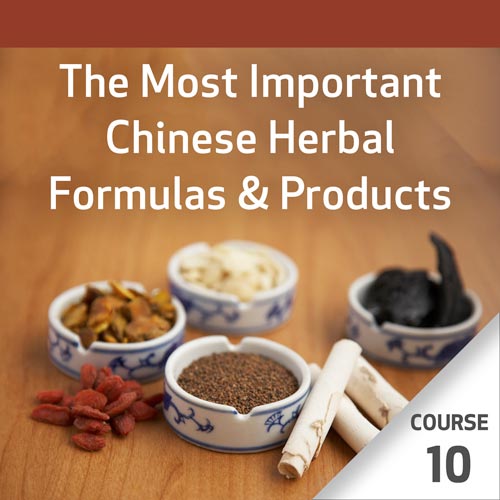

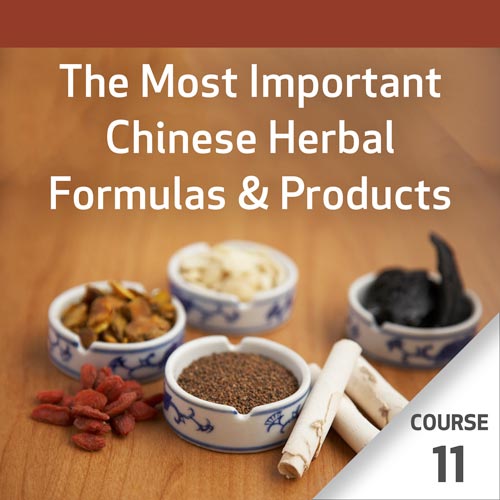

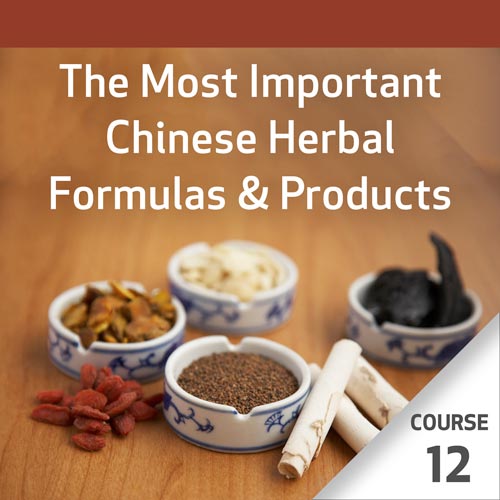

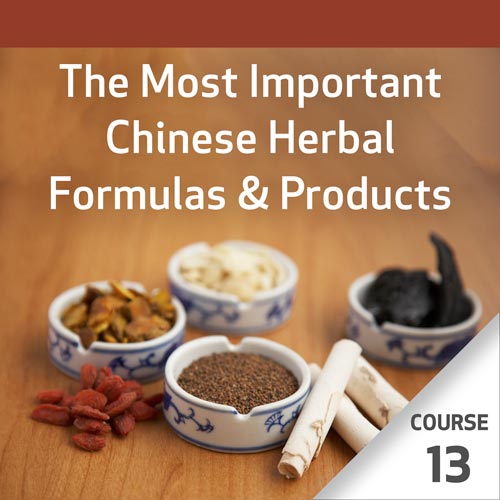

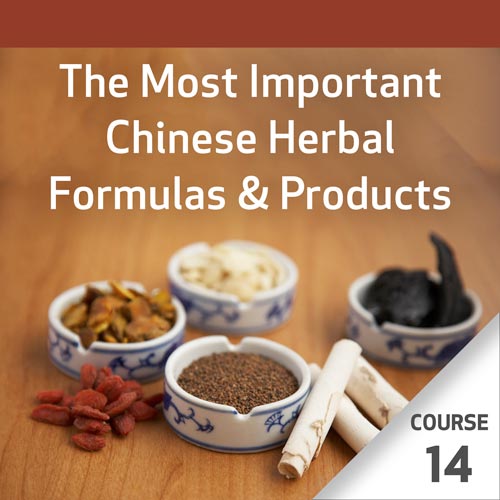

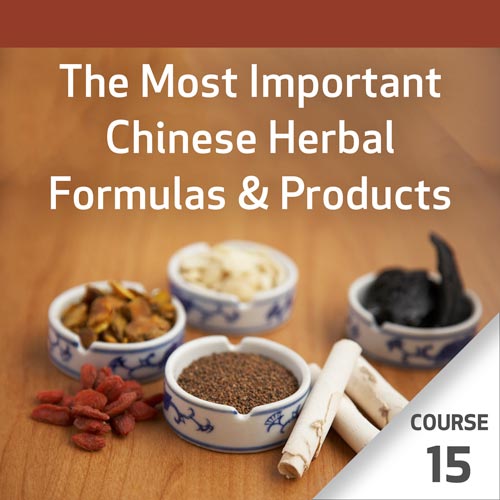

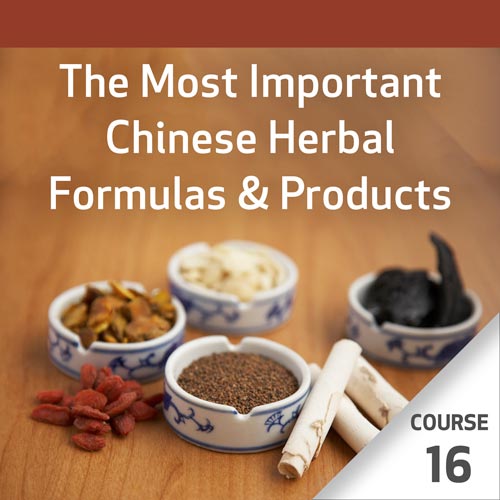

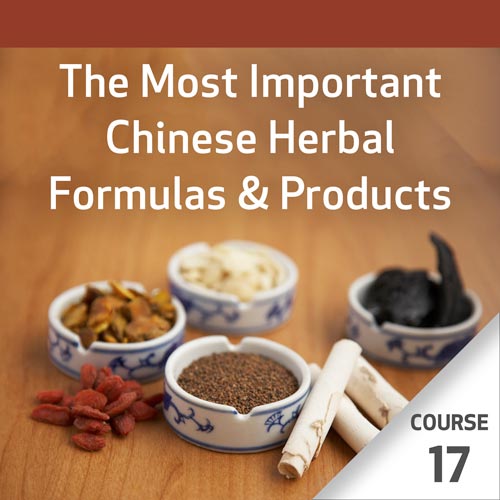

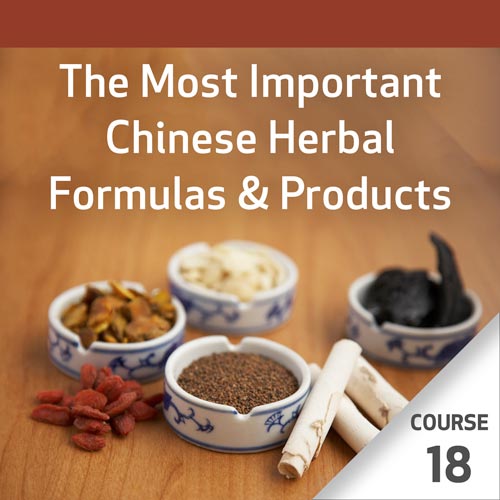

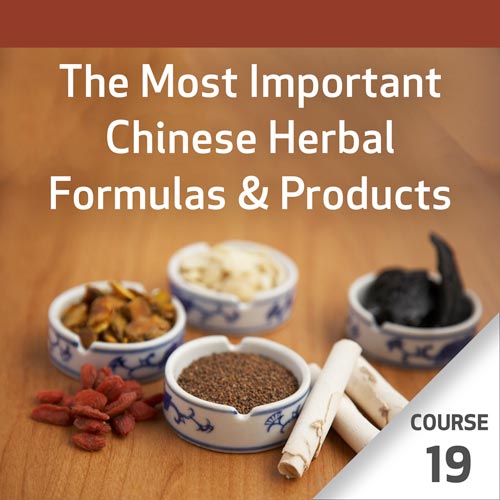

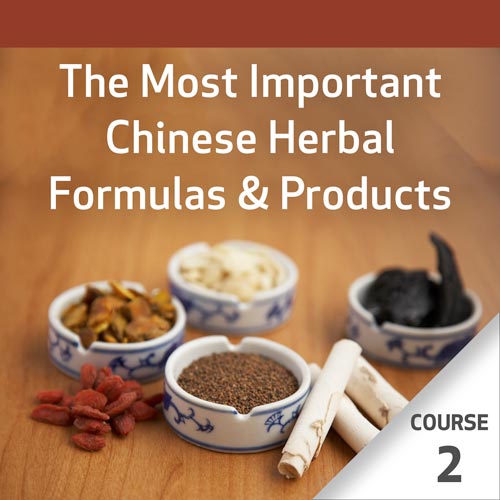

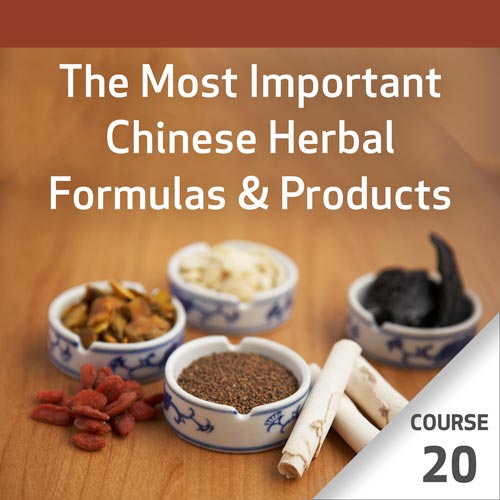




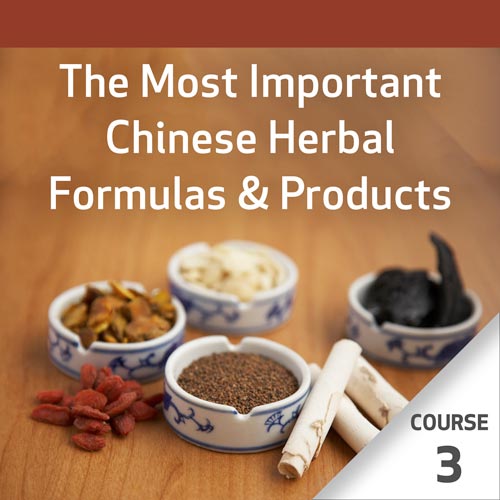

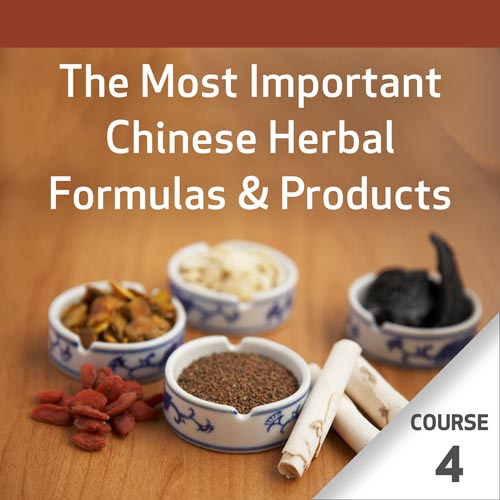

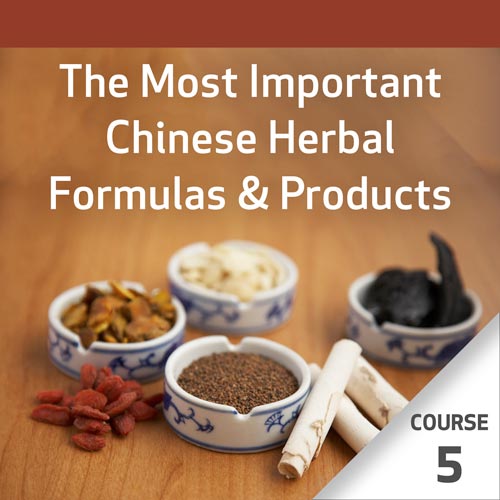

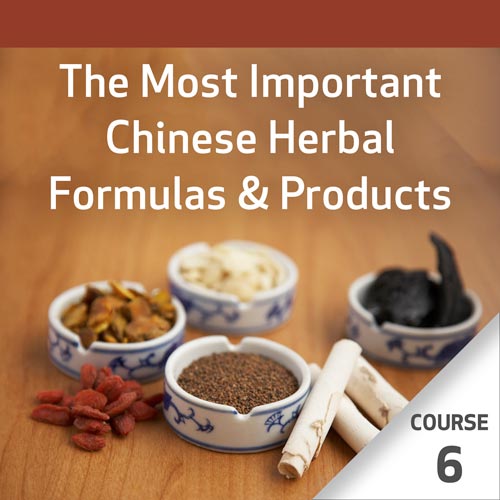

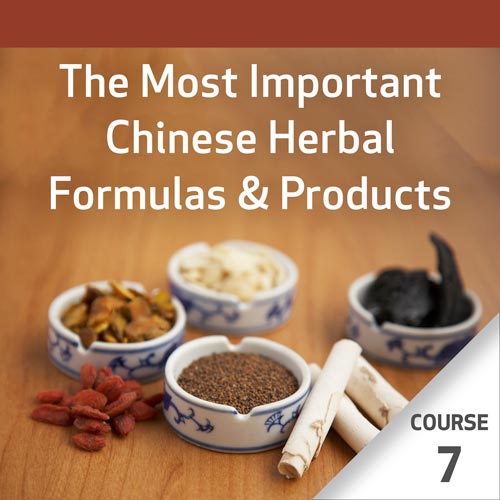

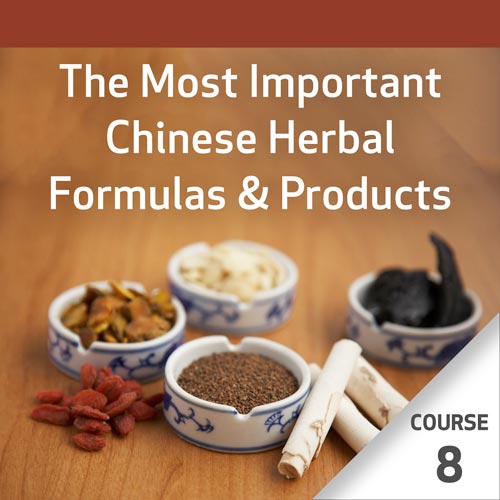

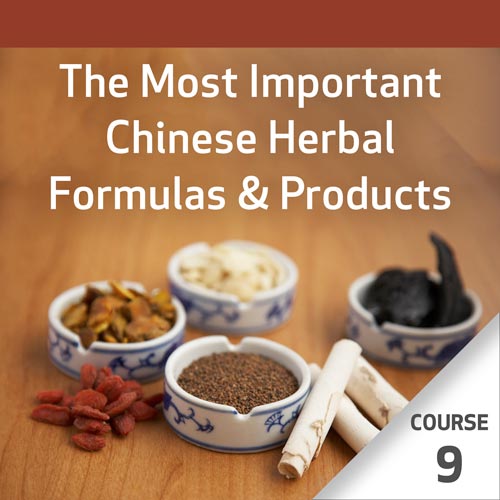

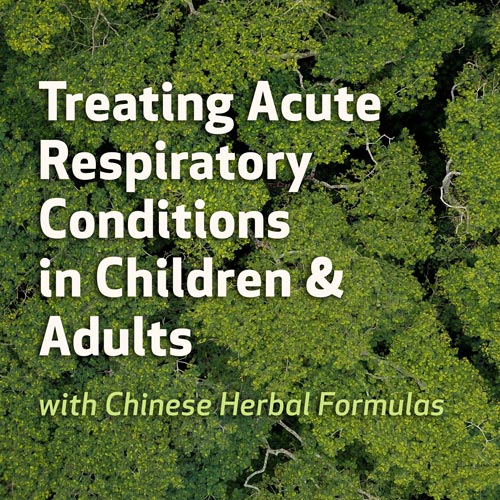





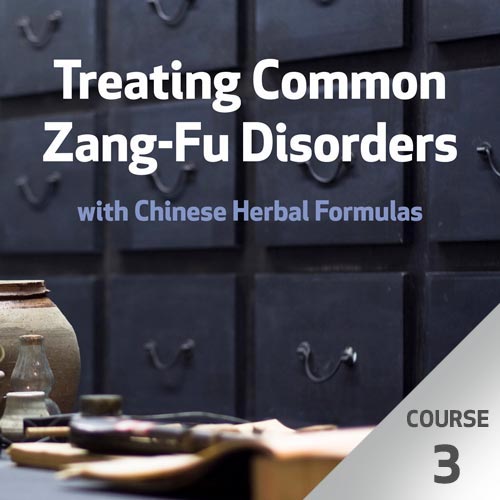

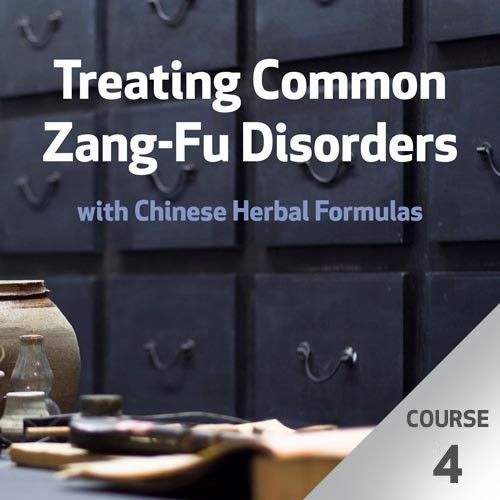

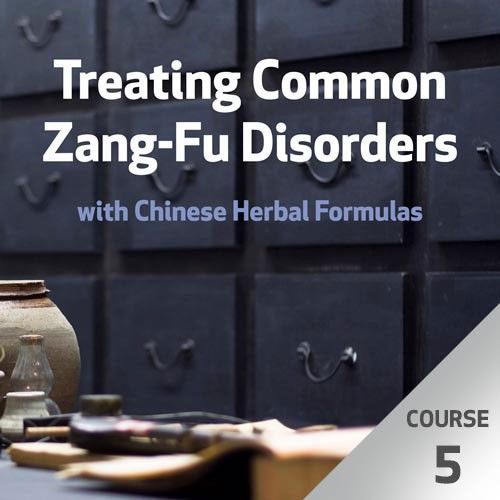

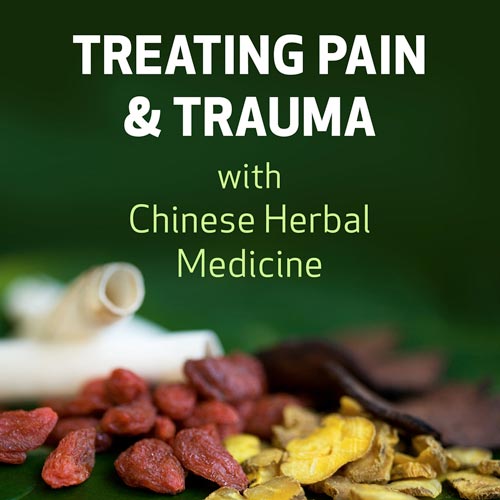

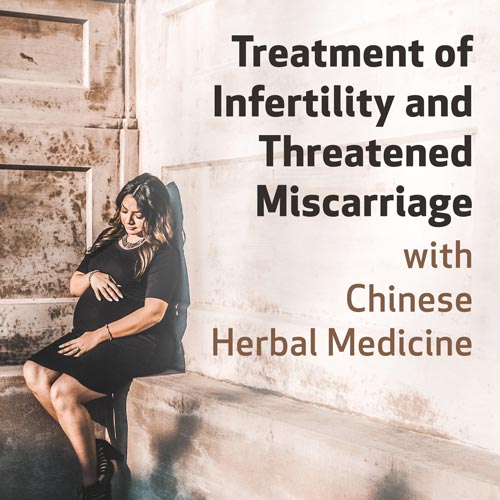

Overview
Japanese shonishin is an approach for treating illness and promoting health in infants and toddlers. Similar to Chinese pediatric tui-na, the Japanese approach uses various metal tools for stimulation of the acupuncture channels. Jake Fratkin presents his shonishin protocol that he uses for children under the age of 2 to treat fever, common cold, cough, constipation and diarrhea. It is based on dispersing excess along the yang channels while supporting deficiency along the yin channels. This presentation includes live demonstration on two baby-volunteers.
Learning Objectives
- See a recorded demonstration on 2 babies
- Gain a deeper understanding of illness in infants
- Be confident in delivering basic Shonishin treatment
- Learn a quick and effective Shonishin treatment protocol to treat infants
Your Teacher

Jake Fratkin
Jake Paul Fratkin, OMD, L.Ac., specializes in Chinese herbal medicine and Japanese acupuncture; a recipient of the Acupuncturist of the Year award, he maintains a private practice, teaches internationally, and is the author of several books on TCM and Chinese herbal formulas and products.
Categories
Tags
The Most Important Chinese Herbal Formulas - Course 1
Pathogenic Wind-Cold
with Jake Fratkin
See In StoreOverview
Class 1: Pathogenic Wind (Part 1)
This is session 1 of 22 classes that are arranged by subject. This class is 1.5 hours (with 30 minutes to complete the program worksheet for NCCAOM PDA applicants). For this class, the student will learn about the disease category, its TCM differentiations, and clinical points in choosing and applying the herbal formulas.
In this session, students will cover 9 herbal formulas and explore the topics of Pathogenic Wind-Cold (Common Cold - Cold Type) and Nasal and Ear Congestion.
A downloadable MP3 audio file, as well as handouts, quiz, evaluation (and program worksheet for those requiring NCCAOM PDAs) will be provided.
Learning Objectives
- Students will learn the contrasting and comparison elements depending on component ingredients.
- For each formula in the handout, students will learn the formula name, source classical text and date, author; they will also learn the herbal ingredients in English, Chinese characters, and pinyin with tones.
- The student will learn classical origins of the formulas covered for Pathogenic Wind-Cold and Nasal and Ear Congestion, their ingredients, and applications.
Your Teacher

Jake Fratkin
Jake Paul Fratkin, OMD, L.Ac., specializes in Chinese herbal medicine and Japanese acupuncture; a recipient of the Acupuncturist of the Year award, he maintains a private practice, teaches internationally, and is the author of several books on TCM and Chinese herbal formulas and products.
Category
Tags
The Most Important Chinese Herbal Formulas - Course 10
Digestive Disorders, Part 2
with Jake Fratkin
See In StoreOverview
Class 10: Digestive Disorders (Part 2)
This will be session 10 of 22 classes that are arranged by subject. This class is 2 hours. For this class, the student will learn about the disease category, its TCM differentiations, and clinical points in choosing and applying the herbal formulas.
Session 10 will cover 9 formulas and will continue to explore the topic of Digestive Disorders. Subjects such as Food Stagnation and Damp Turbidity will be covered.
A downloadable MP3 audio file, as well as handouts, quiz, evaluation (and program worksheet for those requiring NCCAOM PDAs) will be provided.
Learning Objectives
- The student will study herbal formulas that treat damp turbidity (vomitting and diarrhea).
- The student will study and differentiate five herbal formulas that treat food stagnation.
Your Teacher

Jake Fratkin
Jake Paul Fratkin, OMD, L.Ac., specializes in Chinese herbal medicine and Japanese acupuncture; a recipient of the Acupuncturist of the Year award, he maintains a private practice, teaches internationally, and is the author of several books on TCM and Chinese herbal formulas and products.
Category
Tags
The Most Important Chinese Herbal Formulas - Course 11
Digestive Disorders, Part 3
with Jake Fratkin
See In StoreOverview
Class 11: Digestive Disorders (Part 3)
This will be session 11 of 22 classes that are arranged by subject. This class is 2 hours. For this class, the student will learn about the disease category, its TCM differentiations, and clinical points in choosing and applying the herbal formulas.
Session 11 will cover 10 formulas and will continue to explore the topic of Digestive Disorders. Subjects such as Constipation, Hemorrhoid, and Wasting-Thirst Disorders will be covered.
A downloadable MP3 audio file, as well as handouts, quiz, evaluation (and program worksheet for those requiring NCCAOM PDAs) will be provided.
Learning Objectives
- The student will study two herbal formulas that treat washing-thirst disorder (diabetes).
- The student will study and differentiate three herbal formulas that treat hemorrhoids.
- The student will learn how to diagnose indigestion and diabetes, and how to treat them.
- The student will study and differentiate five herbal formulas that treat constipation.
Your Teacher

Jake Fratkin
Jake Paul Fratkin, OMD, L.Ac., specializes in Chinese herbal medicine and Japanese acupuncture; a recipient of the Acupuncturist of the Year award, he maintains a private practice, teaches internationally, and is the author of several books on TCM and Chinese herbal formulas and products.
Category
Tags
The Most Important Chinese Herbal Formulas - Course 12
Gynecological Disorders, Part 1
with Jake Fratkin
See In StoreOverview
Class 12: Gynecological Disorders (Part 1)
This will be session 12 of 22 classes that are arranged by subject. This class is 2 hours. For this class, the student will learn about the disease category, its TCM differentiations, and clinical points in choosing and applying the herbal formulas.
Session 12 will cover 10 formulas and will include Gynecological Tonics and Vaginal Discharge (Leukorrhea).
A downloadable MP3 audio file, as well as handouts, quiz, evaluation (and program worksheet for those requiring NCCAOM PDAs) will be provided.
Learning Objectives
- The student will study and differentiate two herbal formulas that treat vaginal discharge.
- The student will study and differentiate different gynecological tonics that treat infertility, menstrual irregularity, amenorrhea, and also address pregnancy and post-partum support.
- The student will study and differentiate classical and modern formulas for these conditions.
Your Teacher

Jake Fratkin
Jake Paul Fratkin, OMD, L.Ac., specializes in Chinese herbal medicine and Japanese acupuncture; a recipient of the Acupuncturist of the Year award, he maintains a private practice, teaches internationally, and is the author of several books on TCM and Chinese herbal formulas and products.
Category
Tags
The Most Important Chinese Herbal Formulas - Course 13
Gynecological Disorders, Part 2
with Jake Fratkin
See In StoreOverview
Class 13: Gynecological Disorders (Part 2)
This will be session 13 of 22 classes that are arranged by subject. This class is 2 hours. For this class, the student will learn about the disease category, its TCM differentiations, and clinical points in choosing and applying the herbal formulas.
Session 13 will cover 10 formulas and will continue the discussion of gynecological disorders. In this class, the subjects of Premenopausal Tension, Uterine Blood Stasis and Menopausal Disorder/Deficiency Fire will be covered.
A downloadable MP3 audio file, as well as handouts, quiz, evaluation (and program worksheet for those requiring NCCAOM PDAs) will be provided.
Learning Objectives
- The student will study and differentiate four herbal formulas that treat menstrual cramps, and other issues surrounding uterine blood stasis.
- The student will study and differentiate five herbal formulas that treat menopausal disorders.
- The student will study one herbal formula that treats premenstrual tension.
Your Teacher

Jake Fratkin
Jake Paul Fratkin, OMD, L.Ac., specializes in Chinese herbal medicine and Japanese acupuncture; a recipient of the Acupuncturist of the Year award, he maintains a private practice, teaches internationally, and is the author of several books on TCM and Chinese herbal formulas and products.
Category
Tags
The Most Important Chinese Herbal Formulas - Course 14
Liver Disorders, Part 1
with Jake Fratkin
See In StoreOverview
Class 14: Liver Disorders (Part 1)
This will be session 14 of 22 classes that are arranged by subject. This class is 2 hours. For this class, the student will learn about the disease category, its TCM differentiations, and clinical points in choosing and applying the herbal formulas.
Session 14 will cover 10 formulas for Liver Disorders, including Liver Stagnation and Liver-Gallbladder Damp-Heat.
A downloadable MP3 audio file, as well as handouts, quiz, evaluation (and program worksheet for those requiring NCCAOM PDAs) will be provided.
Learning Objectives
- The student will study and differentiate seven herbal formulas that treat liver stagnation.
- The student will study and differentiate three herbal formulas that treat liver-gallbladder damp-heat.
- The student will learn the source classical text, date, author, and ingredients for formulas relating to liver stagnation and liver-gallbladder damp-heat, as well as the Chinese characters and pinyin associated with them.
Your Teacher

Jake Fratkin
Jake Paul Fratkin, OMD, L.Ac., specializes in Chinese herbal medicine and Japanese acupuncture; a recipient of the Acupuncturist of the Year award, he maintains a private practice, teaches internationally, and is the author of several books on TCM and Chinese herbal formulas and products.
Category
Tags
The Most Important Chinese Herbal Formulas - Course 15
Liver Disorders, Part 2
with Jake Fratkin
See In StoreOverview
Class 15: Liver Disorders (Part 2)
This will be session 15 of 22 classes that are arranged by subject. This class is 2 hours. For this class, the student will learn about the disease category, its TCM differentiations, and clinical points in choosing and applying the herbal formulas.
Session 15 will cover 9 formulas and will continue to explore Liver Disorders, focusing on Liver Yang and Internal Wind, and Gallstones.
Handouts, quiz, and an evaluation (or a program worksheet for those requiring NCCAOM PDAs) will be provided.
Learning Objectives
- The student will study and differentiate three herbal formulas that treat gallstones.
- The student will learn the source classical text, date, author, and ingredients for formulas relating to Liver Yang and Internal Wind, and gallstones, as well as the Chinese characters and pinyin associated with them.
- The student will study and differentiate six herbal formulas that treat Liver Yang and internal wind, causing hypertension, headache, ear ringing, and dizziness.
Your Teacher

Jake Fratkin
Jake Paul Fratkin, OMD, L.Ac., specializes in Chinese herbal medicine and Japanese acupuncture; a recipient of the Acupuncturist of the Year award, he maintains a private practice, teaches internationally, and is the author of several books on TCM and Chinese herbal formulas and products.
Category
Tags
The Most Important Chinese Herbal Formulas - Course 16
Heart Blood Stagnation, Heart Phlegm, and Eye/Vision Disorders
with Jake Fratkin
See In StoreOverview
Class 16: Heart Disorders
This will be session 16 of 22 classes that are arranged by subject. In this session, students will cover 10 herbal formulas for the treatment of Heart Blood Stagnation, Heart Phlegm, and Eye/Vision Disorders. The student will learn about the disease category, its TCM differentiations, and clinical points in choosing and applying the herbal formulas.
This class is 2 hours. A downloadable MP3 audio file, as well as a complete handout, quiz, evaluation (and program worksheet for those requiring NCCAOM PDAs) will be provided.
Learning Objectives
- The student will study and differentiate five herbal formulas that treat heart problems of blood or phlegm stagnation.
- The student will learn the source classical text, date, author, and ingredients for formulas relating to Heart disorders, and Eye and Vision disorders, as well as the Chinese characters and pinyin associated with them.
- The student will study and differentiate five herbal formulas that treat eye and vision disorders.
Your Teacher

Jake Fratkin
Jake Paul Fratkin, OMD, L.Ac., specializes in Chinese herbal medicine and Japanese acupuncture; a recipient of the Acupuncturist of the Year award, he maintains a private practice, teaches internationally, and is the author of several books on TCM and Chinese herbal formulas and products.
Category
Tags
The Most Important Chinese Herbal Formulas - Course 17
Disturbed Shen
with Jake Fratkin
See In StoreOverview
Class 17: Disturbed Shen
This will be session 17 of 22 classes that are arranged by subject. In this session, students will cover 11 herbal formulas for the treatment of Disturbed Shen. The student will learn about the disease category, its TCM differentiations, and clinical points in choosing and applying the herbal formulas.
This class is 2 hours. A downloadable MP3 audio file, as well as a complete handout, quiz, evaluation (and program worksheet for those requiring NCCAOM PDAs) will be provided.
Learning Objectives
- The student will study and differentiate classical and modern herbal formulas that treat disorders due to disturbed shen (insomnia, anxiety, palpitations).
- The student will learn the source classical text, date, author, and ingredients for formulas relating to disturbed shen, as well as the Chinese characters and pinyin associated with them.
- The student will learn how to contrast and compare similar formulas depending on component ingredients.
Your Teacher

Jake Fratkin
Jake Paul Fratkin, OMD, L.Ac., specializes in Chinese herbal medicine and Japanese acupuncture; a recipient of the Acupuncturist of the Year award, he maintains a private practice, teaches internationally, and is the author of several books on TCM and Chinese herbal formulas and products.
Category
Tags
The Most Important Chinese Herbal Formulas - Course 18
Urogenital Disorders; Water Retention and Edema
with Jake Fratkin
See In StoreOverview
Class 18: Urogenital Disorders
This will be session 18 of 22 classes that are arranged by subject. In this session, students will cover 12 herbal formulas for the treatment of Urogenital Disorders; Water Retention and Edema. The student will learn about the disease category, its TCM differentiations, and clinical points in choosing and applying the herbal formulas.
This class is 2 hours. A downloadable MP3 audio file, as well as a complete handout, quiz, evaluation (and program worksheet for those requiring NCCAOM PDAs) will be provided.
Learning Objectives
- The student will study and differentiate herbal formulas that address kidney stone or spermatorrhea.
- The student will study and differentiate herbal formulas that address Urinary Disturbance and Prostate Swelling.
- The student will study and differentiate herbal formulas that address Bladder or Prostate Infection.
Your Teacher

Jake Fratkin
Jake Paul Fratkin, OMD, L.Ac., specializes in Chinese herbal medicine and Japanese acupuncture; a recipient of the Acupuncturist of the Year award, he maintains a private practice, teaches internationally, and is the author of several books on TCM and Chinese herbal formulas and products.
Category
Tags
The Most Important Chinese Herbal Formulas - Course 19
Dermatology Disorders
with Jake Fratkin
See In StoreOverview
Class 19: Dermatology Disorders
This will be session 19 of 22 classes that are arranged by subject. In this session, students will cover 11 herbal formulas for the treatment of Dermatology Disorders. The student will learn about the disease category, its TCM differentiations, and clinical points in choosing and applying the herbal formulas.
This class is 2 hours. A downloadable MP3 audio file, as well as a complete handout, quiz, evaluation (and program worksheet for those requiring NCCAOM PDAs) will be provided.
Learning Objectives
- The student will study and differentiate three herbal formulas that address hair loss.
- The student will study and differentiate classical and modern herbal formulas that address the skin disorders of acne, itching, and hives.
- The student will study and differentiate two herbal formulas that address benign tumors and swellings.
Your Teacher

Jake Fratkin
Jake Paul Fratkin, OMD, L.Ac., specializes in Chinese herbal medicine and Japanese acupuncture; a recipient of the Acupuncturist of the Year award, he maintains a private practice, teaches internationally, and is the author of several books on TCM and Chinese herbal formulas and products.
Category
Tags
The Most Important Chinese Herbal Formulas - Course 2
Pathogenic Wind-Heat
with Jake Fratkin
See In StoreOverview
Class 2: Pathogenic Wind (Part 2) - Heat Toxins
This is Session 2 of 22 classes that are arranged by subject. This class is 2 hours. For this class, the student will learn about the disease category, its TCM differentiations, and clinical points in choosing and applying the herbal formulas.
Session 2 will cover 9 formulas and explore the topics of Pathogenic Wind-Heat (Early Cold and Flu), Pathogenic Wind with Heat-Toxins (Severe Cold and Flu), Heat Toxins (Viral Infections), and Stomach Fire.
A downloadable MP3 audio file, as well as handouts, quiz, evaluation (and program worksheet for those requiring NCCAOM PDAs) will be provided.
Learning Objectives
- The student will learn classical origins of the formulas for Pathogenic Wind-Heat and Formulas that Clear Heat, their ingredients, and applications.
- For each formula in the handout, students will learn the formula name, source classical text and date, author; they will also learn the herbal ingredients in English, Chinese characters, and pinyin with tones.
- Students will learn the contrasting and comparison elements depending on component ingredients.
Your Teacher

Jake Fratkin
Jake Paul Fratkin, OMD, L.Ac., specializes in Chinese herbal medicine and Japanese acupuncture; a recipient of the Acupuncturist of the Year award, he maintains a private practice, teaches internationally, and is the author of several books on TCM and Chinese herbal formulas and products.
Category
Tags
The Most Important Chinese Herbal Formulas - Course 20
Tonics, Part 1
with Jake Fratkin
See In StoreOverview
Class 20: Tonics (Part 1)
This will be session 20 of 22 classes that are arranged by subject.In this session, students will cover 13 herbal formulas in regards to Tonics (Part 1). Session 20 will cover 7 formulas and 6 individual herbs that act as Qi Tonics, Blood Tonics, and Qi and Blood Tonics. The student will learn about the disease category, its TCM differentiations, and clinical points in choosing and applying the herbal formulas.
This class is 2 hours. A downloadable MP3 audio file, as well as a complete handout, quiz, evaluation (and program worksheet for those requiring NCCAOM PDAs) will be provided.
Learning Objectives
- The student will study and differentiate one herbal formula that acts as a qi blood tonic.
- The student will study and differentiate four single herbs and two herbal formulas that act as qi tonics.
- The student will study and differentiate two single herbs and four herbal formulas that act as blood tonics.
Your Teacher

Jake Fratkin
Jake Paul Fratkin, OMD, L.Ac., specializes in Chinese herbal medicine and Japanese acupuncture; a recipient of the Acupuncturist of the Year award, he maintains a private practice, teaches internationally, and is the author of several books on TCM and Chinese herbal formulas and products.
Category
Tags
The Most Important Chinese Herbal Formulas - Course 21
Tonics, Part 2
with Jake Fratkin
See In StoreOverview
Class 21: Tonics (Part 2)
This will be session 21 of 22 classes that are arranged by subject. In this session, students will cover 8 herbal formulas in regards to Tonics (Part 2). Session 21 will continue to explore the topic of Tonics, including 2 formulas to tonify kidney yin, and 3 classical formulas and 3 modern formulas to tonify kidney yang and jing. The student will learn about the disease category, its TCM differentiations, and clinical points in choosing and applying the herbal formulas.
This class is 2 hours. A downloadable MP3 audio file, as well as a complete handout, quiz, evaluation (and program worksheet for those requiring NCCAOM PDAs) will be provided.
Learning Objectives
- The student will study and differentiate 2 herbal formulas that tonify kidney yin.
- The student will study and differentitate 3 classical herbal formulas that tonify kidney yang or jing
- The student will study and differentiate 3 modern herbal formulas that tonify kidney yang and jing.
Your Teacher

Jake Fratkin
Jake Paul Fratkin, OMD, L.Ac., specializes in Chinese herbal medicine and Japanese acupuncture; a recipient of the Acupuncturist of the Year award, he maintains a private practice, teaches internationally, and is the author of several books on TCM and Chinese herbal formulas and products.
Category
Tags
The Most Important Chinese Herbal Formulas - Course 22
Tonics, Part 3
with Jake Fratkin
See In StoreOverview
Class 22: Tonics (Part 3)
This will be session 22 of 22 classes that are arranged by subject. In this session, students will cover 10 herbal formulas in regards to Tonics (Part 3). Session 22 will continue to explore the topic of Tonics. Five classical formulas and two modern formulas that act as combination tonics, and 3 individual tonifying herbs will be covered. The student will learn about the disease category, its TCM differentiations, and clinical points in choosing and applying the herbal formulas.
This class is 2 hours. A downloadable MP3 audio file, as well as a complete handout, quiz, evaluation (and program worksheet for those requiring NCCAOM PDAs) will be provided.
Learning Objectives
- The student will study and differentiate 5 herbal formulas that are combination tonics.
- The student will study and differentiate 2 modern formulas.
- The student will study and differentiate 3 single herbs that act as tonics.
Your Teacher

Jake Fratkin
Jake Paul Fratkin, OMD, L.Ac., specializes in Chinese herbal medicine and Japanese acupuncture; a recipient of the Acupuncturist of the Year award, he maintains a private practice, teaches internationally, and is the author of several books on TCM and Chinese herbal formulas and products.
Category
Tags
The Most Important Chinese Herbal Formulas - Course 3
Damp-Heat and Fire
with Jake Fratkin
See In StoreOverview
Class 3: Damp-Heat and Fire
This is Session 3 of 22 classes that are arranged by subject. This class will be approximately 2 hours (with 30 minutes to complete the program worksheet for NCCAOM PDA applicants). In this class, the student will learn about the disease category, its TCM differentiations, and clinical points in choosing and applying the herbal formulas.
Session 3 will cover 11 formulas and explore the topics of Damp Heat Toxins and Fever.
A downloadable MP3 audio file, as well as handouts, quiz, evaluation (and program worksheet for those requiring NCCAOM PDAs) will be provided.
Learning Objectives
- The student will study and differentiate four herbal formulas that treat dampheat toxins.
- The student will study and differentiate four herbal formulas that treat fever.
- The student will learn the historical antecedents for the formula.
Your Teacher

Jake Fratkin
Jake Paul Fratkin, OMD, L.Ac., specializes in Chinese herbal medicine and Japanese acupuncture; a recipient of the Acupuncturist of the Year award, he maintains a private practice, teaches internationally, and is the author of several books on TCM and Chinese herbal formulas and products.
Category
Tags
Overview
Class 4: Lung
This is Session 4 of 22 classes that are arranged by subject. This class is 2 hours long (with 30 minutes to complete the program worksheet for NCCAOM PDA applicants). For each class, the student will learn about the disease category, its TCM differentiations, and clinical points in choosing and applying the herbal formulas.
Session 4 will cover 10 formulas and explore the topics of Lung Yin Deficiency (Dry Non-Productive Cough), Lung Fire, and Lung Phlegm-Heat (Acute Productive Cough).
A downloadable MP3 audio file, as well as handouts, quiz, evaluation (and program worksheet for those requiring NCCAOM PDAs) will be provided.
Learning Objectives
- The student will study and differentiate four herbal formulas that treat lung fire.
- The student will study and differentiate three herbal formulas that treat lung yin deficiency.
- The student will study and differentiate two herbal formulas that treat lung phlegm-heat.
Your Teacher

Jake Fratkin
Jake Paul Fratkin, OMD, L.Ac., specializes in Chinese herbal medicine and Japanese acupuncture; a recipient of the Acupuncturist of the Year award, he maintains a private practice, teaches internationally, and is the author of several books on TCM and Chinese herbal formulas and products.
Category
Tags
Overview
Class 5: Lung (Part 2)
This is Session 5 of 22 classes that are arranged by subject. This class will be approximately 2 hours (with 30 minutes to complete the program worksheet for NCCAOM PDA applicants). In this class, the student will learn about the disease category, its TCM differentiations, and clinical points in choosing and applying the herbal formulas.
Session 5 will cover 11 formulas and explore the topics of Lung Phlegm-Damp, Cough Syrups, and Asthma.
A downloadable MP3 audio file, as well as handouts, quiz, evaluation (and program worksheet for those requiring NCCAOM PDAs) will be provided.
Learning Objectives
- The student will study and differentiate three herbal cough syrups.
- The student will study and differentiate three herbal formulas that treat lung phlegm-damp.
- The student will study and differentiate three herbal formulas that treat asthma (wheezing and difficult breathing).
Your Teacher

Jake Fratkin
Jake Paul Fratkin, OMD, L.Ac., specializes in Chinese herbal medicine and Japanese acupuncture; a recipient of the Acupuncturist of the Year award, he maintains a private practice, teaches internationally, and is the author of several books on TCM and Chinese herbal formulas and products.
Category
Tags
The Most Important Chinese Herbal Formulas - Course 6
Bi Syndrome, Part 1
with Jake Fratkin
See In StoreOverview
Class 6: Bi Syndrome (Part 1)
This will be session 6 of 22 classes that are arranged by subject. This class is 2 hours (with 30 minutes to complete the program worksheet for NCCAOM PDA applicants). For this class, the student will learn about the disease category, its TCM differentiations, and clinical points in choosing and applying the herbal formulas.
Session 6 will cover 10 formulas and explore the topic of Bi Syndrome.
A downloadable MP3 audio file, as well as handouts, quiz, evaluation (and program worksheet for those requiring NCCAOM PDAs), will be provided.
Learning Objectives
- The student will study and differentiate four herbal formulas that treat deficiency bi syndrome.
- The student will study and differentiate five herbal formulas that treat windcold-damp bi syndrome.
- The student will study two herbal formulas that blood stagnates bi syndrome.
Your Teacher

Jake Fratkin
Jake Paul Fratkin, OMD, L.Ac., specializes in Chinese herbal medicine and Japanese acupuncture; a recipient of the Acupuncturist of the Year award, he maintains a private practice, teaches internationally, and is the author of several books on TCM and Chinese herbal formulas and products.
Category
Tags
The Most Important Chinese Herbal Formulas - Course 7
Bi Syndrome, Part 2
with Jake Fratkin
See In StoreOverview
Class 7: Bi Syndrome (Part 2)
This will be session 7 of 22 classes that are arranged by subject. This class is 2 hours. For this class, the student will learn about the disease category, its TCM differentiations, and clinical points in choosing and applying the herbal formulas.
Session 7 will cover 9 formulas and will continue to explore the topic of Bi Syndrome. Subjects such as Cold Bi Syndrome, Heat Bi Syndrome, and Back Pain and Sciatica will be covered.
A downloadable MP3 audio file, as well as handouts, quiz, evaluation (and program worksheet for those requiring NCCAOM PDAs) will be provided.
Learning Objectives
- The student will study two herbal formulas that treat heat bi syndrome.
- The student will study and differentiate five herbal formulas that treat back pain and sciatica.
- The student will study and differentiate two herbal formulas that treat cold bi syndrome.
Your Teacher

Jake Fratkin
Jake Paul Fratkin, OMD, L.Ac., specializes in Chinese herbal medicine and Japanese acupuncture; a recipient of the Acupuncturist of the Year award, he maintains a private practice, teaches internationally, and is the author of several books on TCM and Chinese herbal formulas and products.
Category
Tags
The Most Important Chinese Herbal Formulas - Course 8
Trauma and Pain
with Jake Fratkin
See In StoreOverview
Class 8: Trauma and Pain
This will be session 8 of 22 classes that are arranged by subject. This class is 2 hours. For this class, the student will learn about the disease category, its TCM differentiations, and clinical points in choosing and applying the herbal formulas.
Session 8 will cover 12 formulas and will continue to explore the topic of Trauma and Pain. Subjects such as Internal and Topical Applications will be covered.
A downloadable MP3 audio file, as well as handouts, quiz, evaluation (and program worksheet for those requiring NCCAOM PDAs) will be provided.
Learning Objectives
- The student will learn classical origins of formulas to treat Internal conditions and also the use of Topical Applications, their ingredients, and applications.
- For each formula in the handout, students will learn the formula name, source classical text and date, author; they will also learn the herbal ingredients in English, Chinese characters, and pinyin with tones.
- Students will learn the contrasting and comparison elements depending on component ingredients.
Your Teacher

Jake Fratkin
Jake Paul Fratkin, OMD, L.Ac., specializes in Chinese herbal medicine and Japanese acupuncture; a recipient of the Acupuncturist of the Year award, he maintains a private practice, teaches internationally, and is the author of several books on TCM and Chinese herbal formulas and products.
Category
Tags
The Most Important Chinese Herbal Formulas - Course 9
Digestive Disorders, Part 1
with Jake Fratkin
See In StoreOverview
Class 9: Digestive Disorders (Part 1)
This will be session 9 of 22 classes that are arranged by subject. This class is 2 hours. For this class, the student will learn about the disease category, its TCM differentiations, and clinical points in choosing and applying the herbal formulas.
Session 9 will cover 10 formulas and will start to explore the topic of Digestive Disorders. Subjects such as Spleen Qi Deficiency and Spleen Yang Deficiency will be covered.
A downloadable MP3 audio file, as well as handouts, quiz, evaluation (and program worksheet for those requiring NCCAOM PDAs) will be provided.
Learning Objectives
- The student will study and differentiate six herbal formulas that treat Spleen Qi Deficiency.
- The student will learn how digestive disorders originate, how to diagnose them, and how to treat them in a practical sense.
- The student will study and differentiate four herbal formulas that treat Spleen Yang Deficiency.
Your Teacher

Jake Fratkin
Jake Paul Fratkin, OMD, L.Ac., specializes in Chinese herbal medicine and Japanese acupuncture; a recipient of the Acupuncturist of the Year award, he maintains a private practice, teaches internationally, and is the author of several books on TCM and Chinese herbal formulas and products.
Category
Tags
Treating Acute Respiratory Conditions in Children & Adults with Chinese Herbal Formulas
with Jake Fratkin
See In StoreOverview
Acute respiratory conditions are commonly seen in the clinic, and Chinese herbal formulas offer particularly effective treatment. The common cold that progresses into cough occurs frequently, and in this recording, we will delineate seven distinct stages of cough. Available Chinese herbal formulas will be discussed for each stage, with a focus on the rationale of the component ingredients. Besides cold and cough, we will also discuss fever, infectious throat conditions and ear infections. The same formulas are used for infants, children, and adults, with different dosing considerations. The recording offers clinical tips for managing cases, which will be of interest for advanced herbal practitioners as well as those just beginning to explore herbal medicine.
Learning Objectives
- Dosage considerations for infants, children, and adults
- Receive clinical tips for managing cases
- Become familiar with the Chinese formulas used at each stage
- Discuss cold, cough, fever, infectious throat conditions, and ear infections
- Delineate the five distinct stages of an acute cough
- Understand the rational of the ingredients
Your Teacher

Jake Fratkin
Jake Paul Fratkin, OMD, L.Ac., specializes in Chinese herbal medicine and Japanese acupuncture; a recipient of the Acupuncturist of the Year award, he maintains a private practice, teaches internationally, and is the author of several books on TCM and Chinese herbal formulas and products.
Categories
Tags
Treating Common Zang-Fu Disorders with Chinese Herbal Formulas - Course 1
Liver Imbalance: The Root of 50 Diseases, Part 1
with Jake Fratkin
See In StoreOverview
The first of a series of lectures on common yet difficult presentations. The first two courses relate to liver disorders, and we will discuss etiology, pattern differentiation, appropriate Chinese herbal products, classical formulas, and case histories with customized herbal formulas. Part 1 reviews liver patterns, relevant herbs, and the treatment of anxiety and depression. Part 2 will discuss dizziness and headache, eye disorders, gallbladder issues, and herpes simplex and zoster (shingles).
Learning Objectives
- Learn what common herbs are used in liver regulation
- Understand how Liver zang-fu patterns are organized
- Learn several herbal formulas for anxiety and depression
- Important formulas in liver reulation
Your Teacher

Jake Fratkin
Jake Paul Fratkin, OMD, L.Ac., specializes in Chinese herbal medicine and Japanese acupuncture; a recipient of the Acupuncturist of the Year award, he maintains a private practice, teaches internationally, and is the author of several books on TCM and Chinese herbal formulas and products.
Categories
Tags
Treating Common Zang-Fu Disorders with Chinese Herbal Formulas - Course 2
Liver Imbalance: The Root of 50 Diseases, Part 2
with Jake Fratkin
See In StoreOverview
The nature of liver patterns, and its relation to various disorders. In Liver lecture 2 we will discuss the etiology and treatment of Dizziness, Vertigo, Headache; Dry Eye, Red Eye and Stye, Gallbladder Congestion and Stones, Herpes Simplex and Zoster (Shingles).
Learning Objectives
- Understand etiology and herbal treatment of eye disorders, including dry eye, red eye, and stye
- Understand energetic imbalances behind liver and gallbladder patterns
- Understand etiology and herbal treatment of gallbladder congestion and gallstones
- Understand etiology and herbal treatment of herpes simplex and zoster (shingles)
- Understand etiology and herbal treatment of dizziness, vertigo and headache
Your Teacher

Jake Fratkin
Jake Paul Fratkin, OMD, L.Ac., specializes in Chinese herbal medicine and Japanese acupuncture; a recipient of the Acupuncturist of the Year award, he maintains a private practice, teaches internationally, and is the author of several books on TCM and Chinese herbal formulas and products.
Categories
Tags
Treating Common Zang-Fu Disorders with Chinese Herbal Formulas - Course 3
TCM Gynecology, Part 1
with Jake Fratkin
See In StoreOverview
Jake Fratkin uses his 44 years of clinical experience to present several lectures on Gynecological topics. Lecture 1 compares the Western biomedical understanding with the modern TCM approach. Also, an in-depth discussion of Irregular Menses, with pattern differentiation, and application of modern herbal formulas and modern herbal products. Custom formulas and case histories from Jake's clinical practice will be included.
Learning Objectives
- Learn Western biomedical organization of female hormones affecting gynecological issues.
- Learn TCM organization of gynecological energetic physiology.
- Learn TCM patterns causing Irregular Menses. These include patterns contributing to early, late and erratic periods.
- Learn relevant herbal formulas and products to address various TCM patterns behind Irregular Menses. Discussion will highlight the herbal compositions of each formula. Class discussion will allow herbal modifications and substitutions.
Your Teacher

Jake Fratkin
Jake Paul Fratkin, OMD, L.Ac., specializes in Chinese herbal medicine and Japanese acupuncture; a recipient of the Acupuncturist of the Year award, he maintains a private practice, teaches internationally, and is the author of several books on TCM and Chinese herbal formulas and products.
Categories
Tags
Treating Common Zang-Fu Disorders with Chinese Herbal Formulas - Course 4
TCM Gynecology, Part 2
with Jake Fratkin
See In StoreOverview
Jake Fratkin uses his 44 years of clinical experience to present several lectures on Gynecological topics. Lecture 2 focuses on 4 common gynecological conditions: Amenorrhea and Dysmenorrhea. We will compare the Western biomedical understanding with the modern TCM approach. The in-depth discussion will include pattern differentiation, and application of modern herbal formulas and modern herbal products. Custom formulas and case histories from Jake's clinical practice will be included.
Learning Objectives
- Learn TCM patterns causing Amenorrhea, Dysmenorrhea.
- Learn Western biomedical organization of common gynecological presentations.
- Learn relevant herbal formulas and products to address various TCM patterns behind Amenorrhea and Dysmenorrhea. Class discussion will allow herbal modifications and substitutions.
- Learn TCM organization and energetic physiology of certain gynecological disorders.
Your Teacher

Jake Fratkin
Jake Paul Fratkin, OMD, L.Ac., specializes in Chinese herbal medicine and Japanese acupuncture; a recipient of the Acupuncturist of the Year award, he maintains a private practice, teaches internationally, and is the author of several books on TCM and Chinese herbal formulas and products.
Categories
Tags
Treating Common Zang-Fu Disorders with Chinese Herbal Formulas - Course 5
TCM Gynecology, Part 3
with Jake Fratkin
See In StoreOverview
Jake Fratkin uses his 44 years of clinical experience to present several lectures on Gynecological topics. Lecture 3 focuses on 3 common gynecological conditions: Infertility, and Menopausal Syndrome. We will compare the Western biomedical understanding with the modern TCM approach. The in-depth discussion will include pattern differentiation, and application of modern herbal formulas and modern herbal products.
Learning Objectives
- The student will learn the TCM overview for patterns and formula/product treatment for infertility.
- The student will learn the TCM overview for patterns and formula/product treatment for menopausal disorder.
- The student shall review basic biomedical understanding of infertility, menopausl disorder.
Your Teacher

Jake Fratkin
Jake Paul Fratkin, OMD, L.Ac., specializes in Chinese herbal medicine and Japanese acupuncture; a recipient of the Acupuncturist of the Year award, he maintains a private practice, teaches internationally, and is the author of several books on TCM and Chinese herbal formulas and products.
Categories
Tags
Overview
Many patients come to the clinic for complaints related to pain and trauma. While acupuncture remains the foundation for treatment, integrating Chinese herbal medicine, both internal and external, can help the patient make significant progress. In this recorded webinar, Dr. Fratkin discusses trauma-related complaints including acute injury with swelling, acute soft-tear injuries, muscle strain, wounds, and chronic pain following trauma. Non-traumatic pain conditions will include arthritis, lower back pain, sciatic pain, knee pain, and neck pain. Following an overview of the etiology and pathophysiology of the various conditions, Dr. Fratkin also presents available herbal products and custom formulas for both internal and external application, with emphasis on ingredient composition. Most formulas discussed are available in product form, with certain custom prescriptions for advanced herbalists. Extensive handout notes are included with the recorded course.
Learning Objectives
- Pattern differentiation for pain patterns
- Specific herbal formulas for muscle cramping, arthritis, inflammatory joints
- Application of topical plasters and liniments for acute and chronic trauma and pain
- Various herbal protocols and products for acute and chronic trauma
- Specific herbal formulas for lower back, sciatic and neck pain
Your Teacher

Jake Fratkin
Jake Paul Fratkin, OMD, L.Ac., specializes in Chinese herbal medicine and Japanese acupuncture; a recipient of the Acupuncturist of the Year award, he maintains a private practice, teaches internationally, and is the author of several books on TCM and Chinese herbal formulas and products.
Categories
Tags
Treatment of Infertility and Threatened Miscarriage with Chinese Herbal Medicine
with Jake Fratkin
See In StoreOverview
Infertility in women under the age of 40 responds very well to Chinese herbal medicine and acupuncture, especially when structural complications of uterine fibroids, polycystic ovaries or fallopian tube damage are absent. The teacher’s personal success rate in successful pregnancies is above 85% for women who have chosen not to use IVF or hormone therapy. There are numerous TCM patterns that inhibit fertility, and most cases are directed at regulating problems of menstruation: irregularity, amenorrhea, menorrhagia, and premenstrual syndrome (PMS). Threatened miscarriage can be due to deficiency, heat or trauma, and appropriate formulas are discussed. Dr. Fratkin presents available herbal products and custom formulas, as well as a discussion of hormone physiology and the application of Western lab diagnosis. Extensive handout notes are included with the recorded course.
Learning Objectives
- Understand the physiological basis of infertility
- Examine the various TCM patterns contributing to infertility
- Understand the various medical hormonal approaches to infertility
- Detail herbal treatments for the various TCM patterns
- Examine the various TCM treatments for threated miscarriage
Your Teacher

Jake Fratkin
Jake Paul Fratkin, OMD, L.Ac., specializes in Chinese herbal medicine and Japanese acupuncture; a recipient of the Acupuncturist of the Year award, he maintains a private practice, teaches internationally, and is the author of several books on TCM and Chinese herbal formulas and products.
